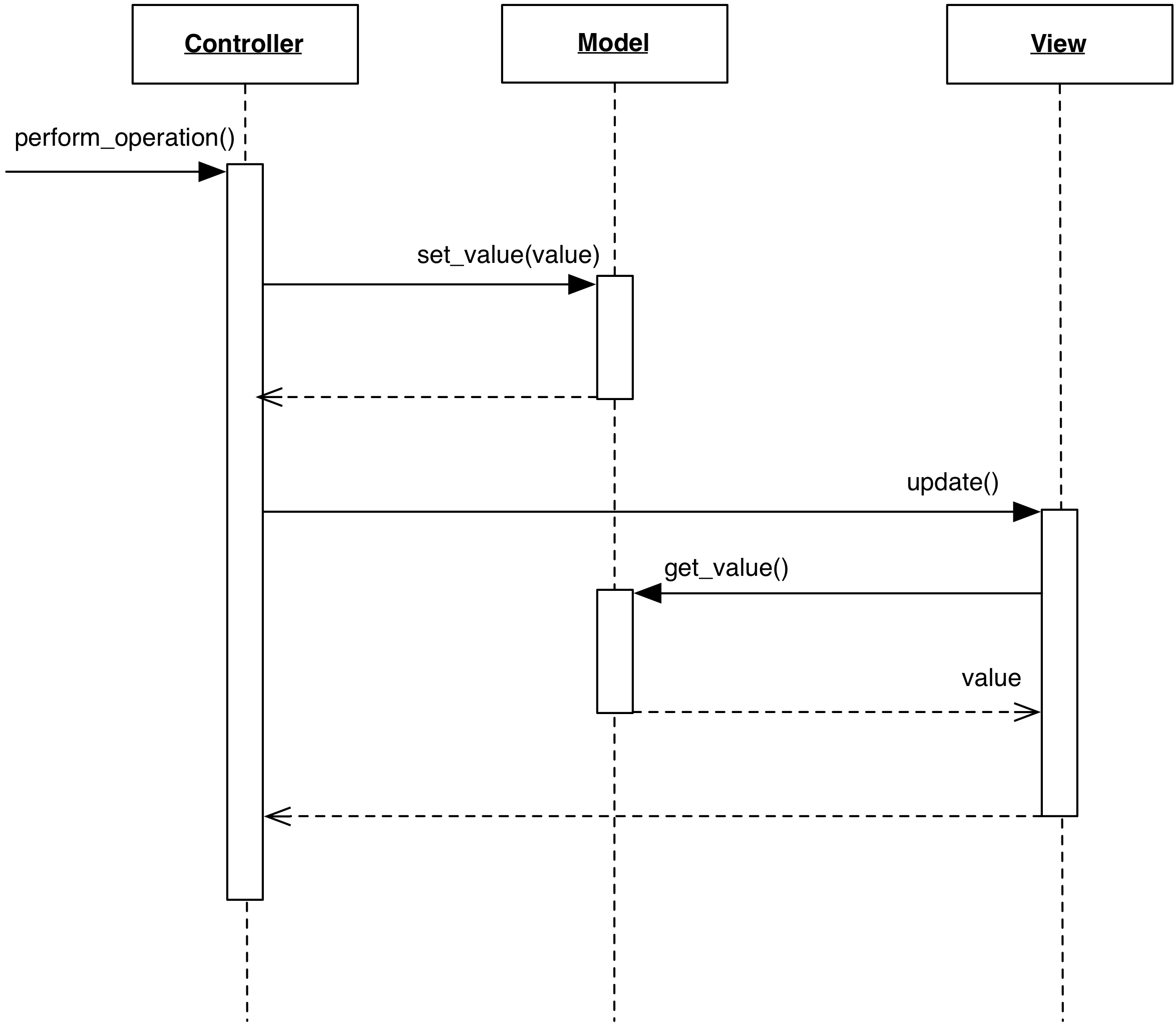2.4.3 Passive Model
Motivation
Traditional MVC uses the so-called Active Model: when the Model changes its listeners are notified of the change. Its counterpart is the Passive Model which does not perform notification services. Instead, this task is performed by the Controller.
Passive Model has its area of excellence in Web-based MVC, where the fundamental nature of the HTTP protocol prevents the Model to notify the View. It is also relevant for all those cases where notifications cannot be produced because the data source is unable to provide this service, such as most databases or a plain file.
Design
The interaction diagram shows the behavior of a Passive Model

Specifically, the sequence of events is:
- The Controller modifies the Model
- The Controller informs the View to update itself
- The View now inquires the Model contents as in the Active case.
The major shortcoming of a Passive Model is that Views get desynchronized if multiple Controllers can modify the Model. Collaboration between Controllers can prevent this desynchronization, but for all practical purposes an Active Model quickly becomes a better solution. If this is required, a Passive Model can become Active either through inheritance or by using a wrapper class satisfying the Passive Model’s original interface. This wrapper will receive change requests from Controllers, delegate them to the Passive Model, and finally notify the listeners.
Despite the disadvantage, the Passive Model has the following important advantages:
- Any object (e.g. a key-value dictionary, a list, a single value, a previously developed business object) can be used as a Model without modifications
- It allows better control on the refresh of the View. The Controller can issue multiple changes to the Model without triggering a View’s refresh for each change
- As commented in the Motivation section, Web-based MVC cannot use an Active Model strategy due to the intrinsic separation of Models from rendered Views.
Practical Example: Django MVC
The web framework Django is our choice to present a simple case of Passive Model. Please note that this example is not meant to be considered orthodox Django style, and has been stripped beyond the bare minimum to illustrate the topic.
A Model in Django is specified as a python class with appropriate descriptors
class Article(models.Model):
title = models.CharField(max_length=200)
text = models.CharField()
This model is backed by a database, which stores the actual state. It is unable to deliver notification in case of database content changes, and is therefore a Passive Model. In the trivial case of Web backend MVC here presented, the need for notification does not emerge because the refreshing of the View is triggered by an explicit browser request. The Controller handles this request, retrieves the Model, performs any required action, and renders the View with the updated data.
def modify_article(request, article_id):
article = get_object_or_404(Article, pk=article_id)
# These changes do not trigger any notification. The model is passive.
article.title = request.POST["title"]
article.text = request.POST["text"]
# Persist the replaced data.
article.save()
template = Template("<html><body>"
"<h1></h1>"
"<p></p>"
"</body></html>")
context = { "article" : article }
html_doc = template.render(context)
return HttpResponse(html_doc)